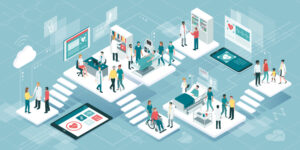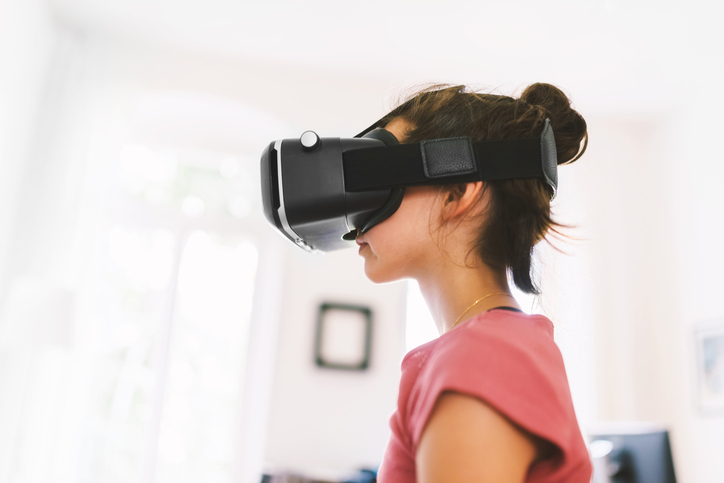
Professionals within the healthcare industry have a highly demanding job, with their workdays ranging from managing patient care and communicating status updates to caregivers, to handling administrative tasks all while navigating a potential lack of supplies, resources, or staff. A recent Vivian Health study asked over 1,000 workers in various industries across the U.S. to rate how stressful their jobs were on a scale of one to 10. Nearly half of participants stated that their job was stressful, but healthcare workers took the number one spot.
Stressful workloads pose a significant challenge within the healthcare industry, and one prominent reason for this is the number of manual administrative and non-clinical tasks staff are shouldering daily. Almost half of the nurses who responded to a recent survey from McKinsey & Company echoed that sentiment by sharing that the intent to leave their role in the near future was based largely on one key reason: an unmanageable workload.

With the Rise of AI, What IP Disputes in Healthcare Are Likely to Emerge?
Munck Wilson Mandala Partner Greg Howison shared his perspective on some of the legal ramifications around AI, IP, connected devices and the data they generate, in response to emailed questions.
Proven to offer cost-effective solutions, Real-Time Location Systems (RTLS) can ease operational burdens for efficiency and enhance the relationship between patients and caregivers, enabling a more human-focused experience for all. The IoT technology and location sensors behind RTLS technology feature active-radio frequency identification (RFID) wearable badges and tags to provide immediate, comprehensive enterprise visibility for the precise location of equipment, colleagues, or patients to improve and streamline workflow. These location technologies play a pivotal role in automating aspects of staff workloads and provide insights to reduce bottlenecks and inefficiencies, ensuring that staff can instead spend more time doing what they love – treating their patients.
Why leaders should implement automated workflows
The use of the Internet of Things (IoT) in healthcare has evolved at an incredible pace, which has significantly developed the enterprise-wide location insights occurring within the industry. Digital technologies successfully implemented in a healthcare system can help reduce annual expenditures by more than 10%, as well as lessen stressors on staff.
Once an RTLS solution or enterprise-wide system is implemented, it enables healthcare organizations to analyze actionable data to find opportunities to optimize resources, such as adequately staffing departments according to the busiest windows. Healthcare professionals desire access to platforms that automate workflow to alleviate the burden of manual documentation in a truly impactful way. Lessening the workloads of healthcare professionals is a critical aspect of combating burnout, improving care, growing satisfaction, and investing in retention.
With the use of RTLS to assign badges upon patient check-in, advanced workflow platforms can produce a major impact on non-clinical manual tasks by offering automatic patient status updates, estimated wait times, and staff views on display boards that give an easy-to-read layout of each patient’s journey. This ensures teams are on the same page with minute-by-minute visibility to continuously measure interactions and roadblocks. For additional insights, RTLS offers real-time room and bay-level map views, lists medical equipment locations and detailed equipment usage, and provides alerts for equipment maintenance and cleaning to further reduce bottlenecks. Once asset management RTLS tags are placed on the necessary equipment, staff can view the precise location of equipment in seconds and quickly locate the tools they need to provide high-quality care.
Automated workflow benefits the patients
A key aspect of the patient experience is ensuring that patients and loved ones are well-informed and comfortable throughout their care journey. To ensure this, healthcare organizations are likely to seek tools that allow for efficient communication between patients, staff, and loved ones. By leveraging RTLS insights alongside patient workflow software, automated family text messaging features can share updates with patient-approved contacts in real-time. Messaging updates can return some comfort to patients as their loved ones may not be able to visit immediately or may not be local to the facility. An increase in trust among the patient, medical staff, and family is often experienced in organizations that have implemented this offering. RTLS can also provide automated proactive patient communications to share status details, wait times, and digital wayfinding.
Digital wayfinding can reduce anxiety for patients and visitors as healthcare systems seek to provide a more intuitive experience. Navigation difficulties can cause stress and lead to late arrivals, missed appointments, and ultimately delayed patient care. Late appointments, specifically, can be costly due to healthcare team members losing precious time while waiting for late patients. Delayed appointments slow the planned schedule and create inefficiencies, which can reduce patient satisfaction and decrease HCAHPS scores. Hospitals nationwide collectively lose around $150 billion each year from missed appointments. When integrated with a larger RTLS deployment, an advanced digital wayfinding solution can prepare a customized experience for a patient from the start. Healthcare organizations accomplish this easy navigation and peace of mind by providing clear directions, travel times, and indoor walking instructions using a private Google Maps-like interface before the patient even steps inside the facility doors.
Automated workflow benefits the staff
Healthcare leadership must also consider the well-being of their clinicians in addition to providing patients with peace of mind. In recent years, the golden standard of optimizing healthcare performance has shifted from the Triple Aim, which focuses on enhancing the patient experience, improving population health, and lowering costs, to incorporating the clinician’s well-being. The challenges of the last few years have repeatedly demonstrated the effects of clinician burnout and how it impacts the patient experience, patient health outcomes, staff retention, and financial costs. As healthcare organizations continue to seek digital transformation solutions to boost the overall experience and care quality, they must also consider the well-being of their staff members.
In an effort to address staff well-being, efficiency, and patient outcomes, as well as build a hospital of the future, a health system in Fort Worth, Texas leveraged an existing construction project to create a next-generation wireless system that offered RTLS workflow. This decision aimed to automate non-value-added tasks and provide insights on operations improvements. Through a custom algorithm that prioritized all tasks related to patient care, patient transport, patient flow, and capacity management, efficiency increased by allocating 100% of staff resources to critical operations during peak times and administrative tasks to off-peak hours. Through these process changes, the hospital reached over 90% in both employee engagement and satisfaction and reported $1 million in first-year savings.
RTLS truly enhances the experience for patients and staff
Equipping healthcare professionals with cutting-edge tools and real-time insights and reducing their involvement in non-patient tasks are significant steps toward improving staff satisfaction, patient outcomes, and the facility’s bottom line. Automation in non-clinical tasks and reporting ensures efficiency and accuracy and provides decision-makers and healthcare professionals with the data points they need to prioritize tasks that promote high-quality care for patients, better work-life for staff, and safety for all.
Photo: elenabs, Getty Images
Caryn Hewitt is the Senior Director, Consulting Services at CenTrak, which offers locating, sensing, and security solutions for the healthcare industry. CenTrak has helped more than 2,000 healthcare organizations around the world build a safer, more efficient enterprise.














